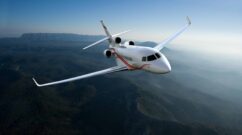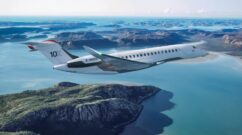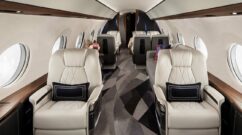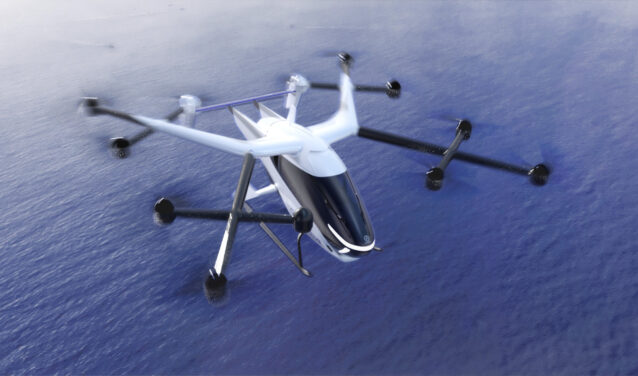On April 9, 2025, above theOsaka World Expo site, a futuristic aircraft rises silently into the air. Three seats, electric rotors, a cockpit designed in partnership with Thales: this is not a model, but a prototype in real flight, from SkyDrive, one of the most promising players in the nascent eVTOL(electric Vertical Take-Off and Landing aircraft) market.
This flight is no promotional gimmick. It marks a world first: the public demonstration of a three-seat eVTOL, piloted within a major institutional framework, with the explicit support of the Japanese government and the technological backing of a renowned Europeanavionics manufacturer. It embodies a clear ambition: to make Japan one of the leaders in carbon-free urban air mobility.
For seasoned air transport observers, this is a pivotal moment. It’s no longer just about projects, 3D visuals or concepts. It’s about an accelerating paradigm shift: that of silent, clean, ultra-localized aviation, capable of linking an airport terminal to an urban heliport in a matter of minutes, with no direct CO₂ emissions. A solution all the more strategic at a time when major metropolises are seeking to relieve congestion on their land routes and green their mobility policies.
SkyDrive is not alone in this niche. But its ability to combine innovation, industrial collaboration and public support makes it an ideal case study for anyone interested in the evolution of air transport – whether urban, regional or business.
At AEROAFFAIRES, we’ve been following the rise of new air mobility for several years now. Not only because they foreshadow the aviation of tomorrow, but also because they are an extension of our current mission: to offer our customers – executives, VIPs, project teams – reliable, rapid and personalized air solutions, whether they be private jets,helicopters or, in the future,eVTOLs.
In this article, we take a step back and take a hard look at what SkyDrive really means for business aviation and the global aeronautical ecosystem. Behind the spectacular image of vertical take-off, there is a market in the making, business models to be refined, and a promise to be kept: that of cleaner, more agile, smarter air transport.
SkyDrive, Japan’s pioneer of urban air mobility
SkyDrive was founded by a group of volunteer engineers known as Cartivator. Their ambition, back in 2012: to design a flying vehicle. Not a science-fiction utopia, but a realistic alternative to urban traffic jams, with concrete applications in everyday transport. In 2018, the project took a strategic turn: SkyDrive Inc. was officially founded, with the mission of developing an electric eVTOL with vertical take-off and landing.
Japanese roots, international funding
From the outset, SkyDrive benefited from the interest of the Japanese private sector. Groups such as Toyota, NEC and Fujitsu provided technical, industrial and financial support. The Japanese government, through agencies such as METI and MLIT, facilitates experimentation and contributes to the development of a dedicated regulatory framework. In 2020, SkyDrive successfully completed its first manned test flight, paving the way for larger-scale public demonstrations.
The company rapidly raises several rounds of financing, topping the $100 million mark, enabling it to industrialize its development. The company set up its headquarters in Toyota City, a strong symbol of its link with the automotive world – and of its desire to democratize air mobility in the same way as the car.
The SD-05: an aircraft designed for the urban environment
The heart of the SkyDrive project is the SD-05 model. A compact, 100% electrically-powered eVTOL designed to carry two passengers and a pilot over short distances (around 10 to 15 km in its current version, with the aim of eventually exceeding 40 km). It is equipped with twelve rotors distributed over eight arms, a configuration that maximizes in-flight stability and offers safe redundancy in the event of partial failure.
The cabin is uncluttered, with an emphasis on ergonomics and visibility. The cockpit incorporates an avionics system developed in partnership with Thales, combining pilot intuitiveness with advanced protection against cyber-attacks. The SD-05’snoise footprint is smaller than that of a light helicopter, making it a natural candidate for integration into dense urban environments.
A clear vision for 2025
SkyDrive is not content with prototypes. The company is aiming for series production of its SD-05 as early as 2025, with priority given to the Japanese market, particularly Osaka, which is planning to set up eVTOL lines during the World Expo. The aim is to demonstrate the viability of electric air transport in a real-life context, both to the public and to decision-makers.
This is part of a wider Japanese national strategy, spearheaded by the Ministry of Land, Infrastructure, Transport and Tourism (MLIT), to make Japan a testing ground and world leader in Advanced Air Mobility (AAM).
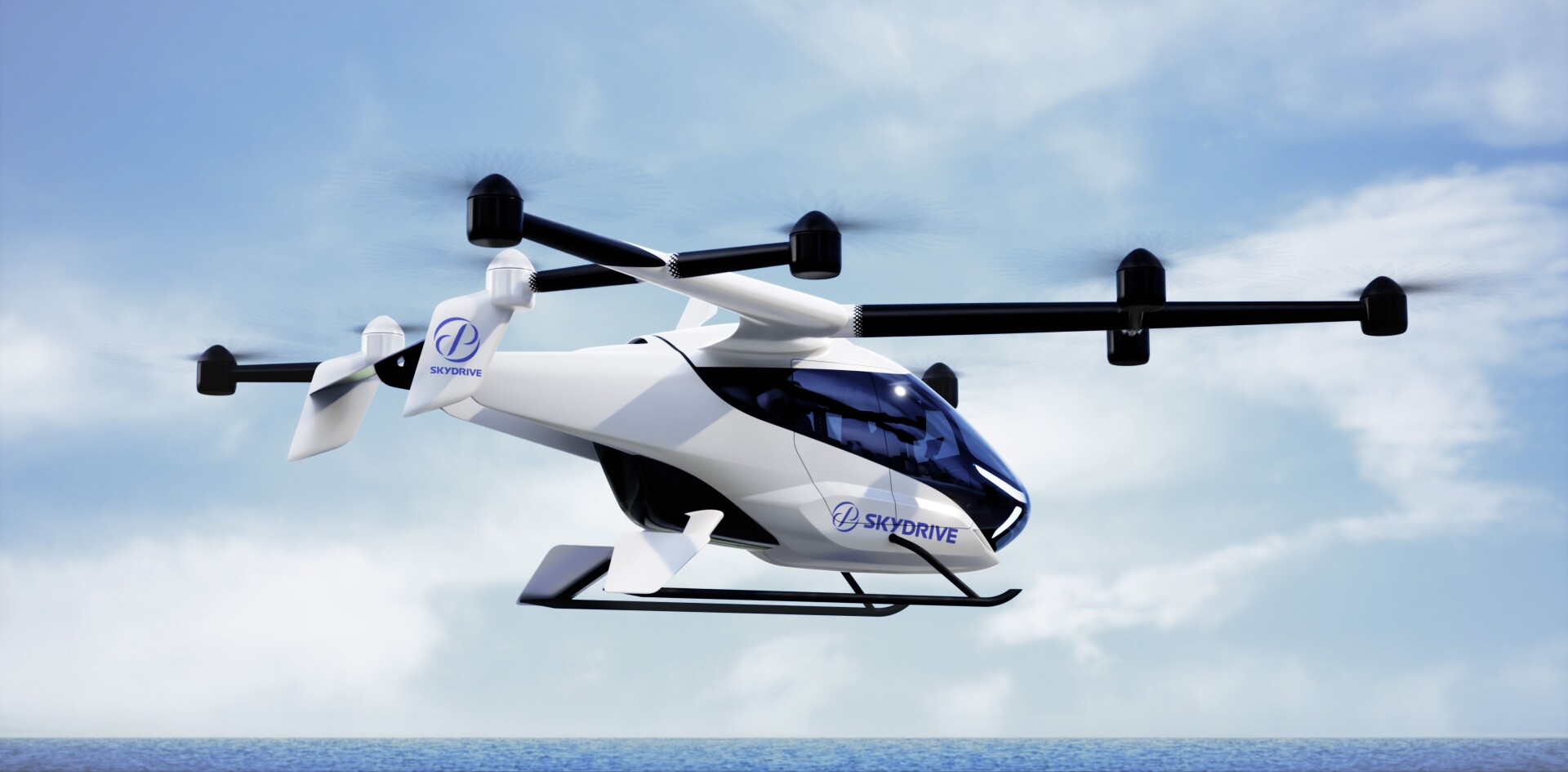
Demonstration flight in Osaka: a turning point for electric aviation
On April 9, 2025, just a few weeks before the official opening of Expo 2025 Osaka, SkyDrive did what few eVTOL players have dared: a perfectly executed, public, manned flight over a high-profile site, in the presence of Japanese government representatives, international aviation players and specialist journalists. The message is clear: the SD-05 is ready to enter real life.
An unprecedented 3-seat configuration
Unlike many competitors still at the static prototype or automated flight stage, SkyDrive is presenting a piloted aircraft, with two passengers on board. This 3-seat configuration – still a rarity on the eVTOL market – makes it possible to envisage concrete uses in VIP transport or premium urban shuttles, at the frontier between business aviation and new mobility.
The flight lasted around ten minutes, at a stabilized altitude of 30 meters, within a secure perimeter inside Yumeshima Park, the Expo site. Images of the take-off, in-flight stability and controlled landing were broadcast around the world, widely reported by specialist media and aviation industry observers.
Strategic technological cooperation with Thales
A key partner in the project, the French group Thales supplied the SD-05’son-board avionics. This choice is not insignificant. By integrating technology from both commercial and military aviation, SkyDrive ensures that it meets the most demanding safety standards. In particular, the system includes an assisted piloting interface, navigation using sensor data fusion, and on-board cybersecurity– areas in which Thales has a historic lead.
This partnership also embodies a fundamental trend: the rise ofalliances between young eVTOL manufacturers and established players in the aeronautics industry. It’s no longer just a question of agility or innovation, but of technological credibility, essential for convincing regulators, financiers and, ultimately, end customers.
A demonstration conceived as a political milestone
The flight of the SD-05 in Osaka was not an isolated coup. It is part of a roadmap driven by the Japanese authorities, who seeAdvanced Air Mobility (AAM) as a strategic lever. The Ministry of Transport, in coordination with MLIT, is actively pushing for the development of vertiports, the elaboration of technical standards and the creation of a specific authorization regime for eVTOLs.
By choosing to make SkyDrive one of the highlights of Expo 2025, Japan is sending out a strong signal: eVTOL is a priority national technology. It’s also a way of preparing public opinion, by making visible, reassuring and accessible an innovation still perceived as remote.
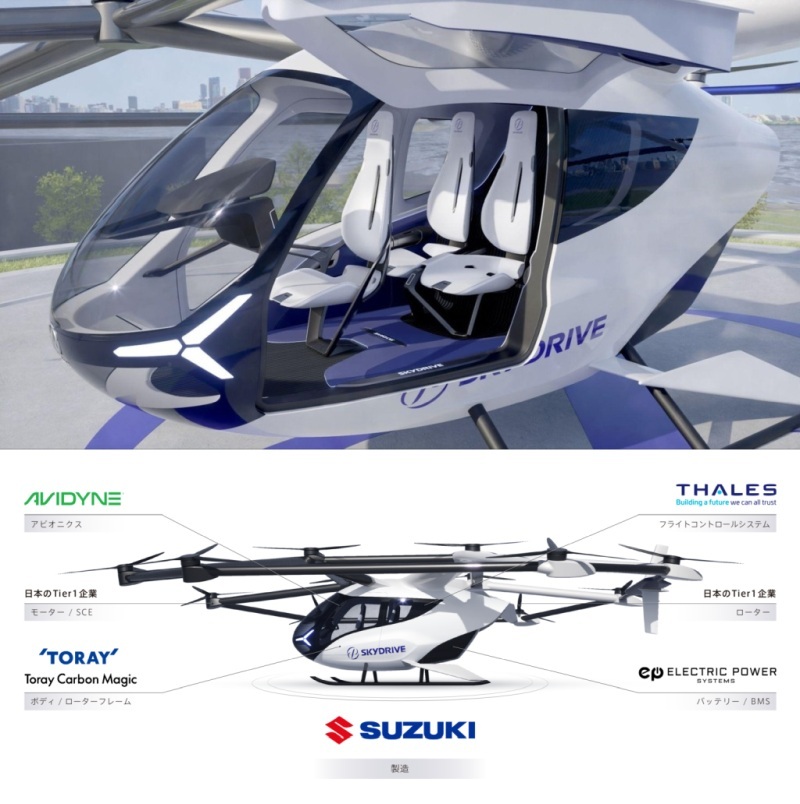
A booming global market: where does SkyDrive stand against Lilium, Volocopter, Archer and Joby?
The development of eVTOLs is not confined to Japan. Worldwide, more than a hundred projects are underway, led by both venture-capital-backed start-ups and traditional aerospace giants. Among them, a few names dominate media attention and fund-raising: Lilium (Germany), Volocopter (Germany), Joby Aviation (USA), Archer Aviation (USA) – each with a distinct approach.
SkyDrive stands out from the crowd not only for its urban, compact and pragmatic positioning, but also for its decision to focus on a structured national market before expanding internationally. Where others communicate before approving, SkyDrive tests, secures and then demonstrates.
Technical comparison: autonomy, capacity, infrastructure
| Manufacturer | Model | Capacity | Target range | Max. speed | Propulsion | Target certification |
|---|---|---|---|---|---|---|
| SkyDrive | SD-05 | 1 pilot + 2 pax | ~15 km (target 40 km) | ~100 km/h | Electric | Japan (MLIT) |
| Joby Aviation | Joby S4 | 4 pax + 1 pilot | ~240 km | ~320 km/h | Electric | FAA (USA) |
| Lilium | Lilium Jet | 6 pax | ~250 km | ~280 km/h | Electric thrust | EASA (EU) |
| Volocopter | VoloCity | 1 pax + 1 pilot | ~35 km | ~110 km/h | Multirotor | EASA (EU) |
| Archer | Midnight | 4 pax + 1 pilot | ~160 km | ~240 km/h | Electric | FAA (USA) |
SkyDrive is not – for the moment – aiming for long distance or high cruising speeds. Its strategy is based on complementing ground transportation, particularly in Japanese metropolitan areas, where rail infrastructure is saturated and density makes it difficult to add new routes on the ground.Efficiency on short routes, combined with simplified maintenance, is its main economic lever.
A changing competitive ecosystem
Some of its competitors are moving ahead quickly, but with considerable risk. Joby and Archer, listed on the Nasdaq via SPACs, have experienced violent fluctuations in valuation. Lilium, despite its innovative vector thrust technology, has scaled back its production ambitions. Volocopter, backed by Daimler, is aiming for a first commercial launch in Paris during the 2024 Olympic Games, but remains on very restricted routes.
In this context, SkyDrive is a serious outsider: less spectacular, but more coherent. Its collaboration with Thales, its national strategy steered by the State, and its focus on a simple, certifiable product give it an industrial depth not always found in its rivals.
Asian ambitions first, but signals towards Europe
SkyDrive is primarily targeting major Asian metropolises such as Tokyo, Osaka, Seoul and Singapore, where urban congestion and public technophilia make eVTOLs easy to accept. Nevertheless, the partnership with Thales, and recent exchanges with European airports (notably Zurich and Nice), suggest a willingness to open up toEurope – provided that certification standards are harmonized.
In fact, the manufacturer has declared its intention to eventually obtain dual MLIT/EASA certification, enabling interoperability with Western markets. This is a rare but strategic move in a sector where regulatory recognition is the key to success.
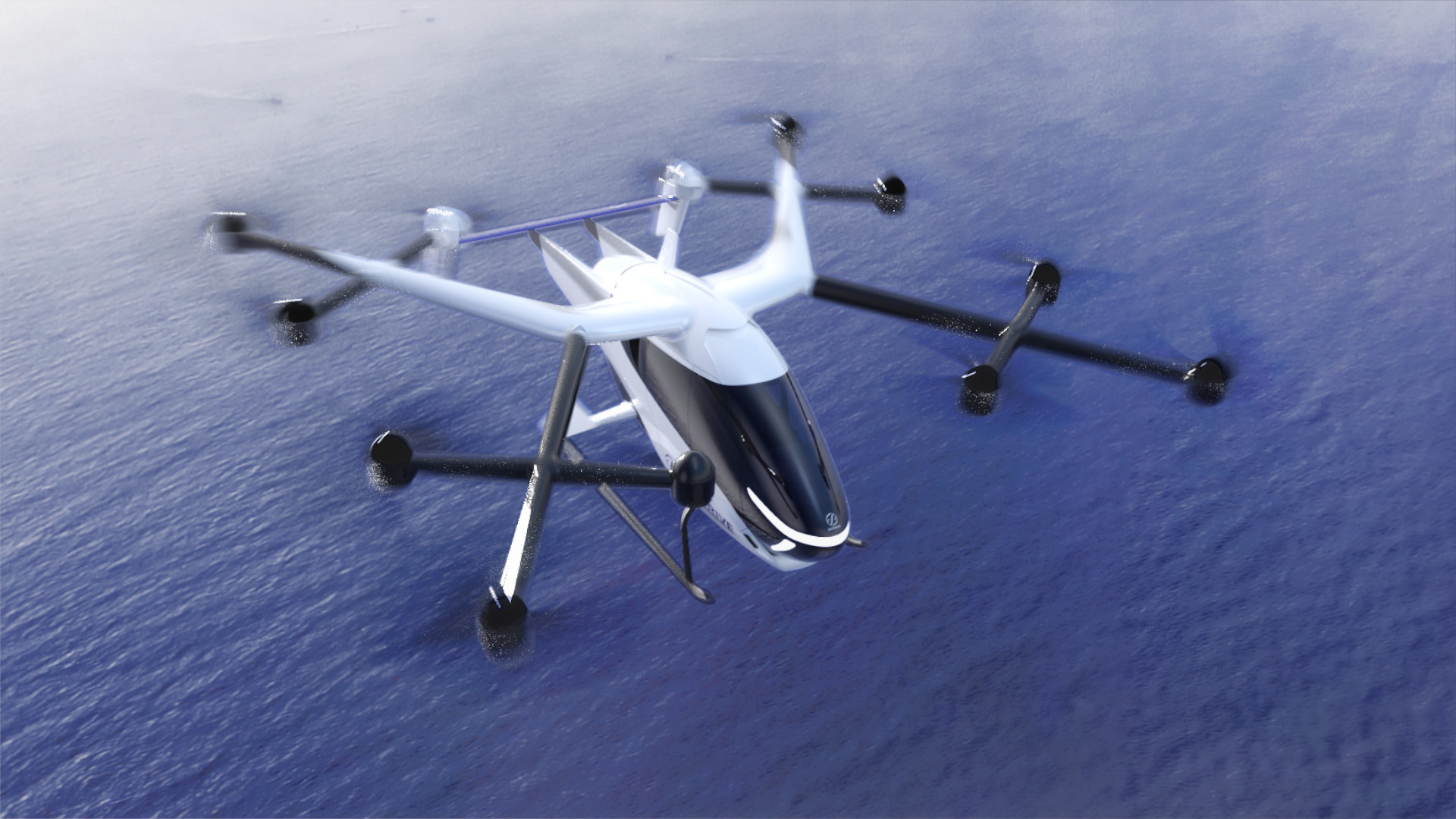
Regulatory, infrastructural and societal challenges
Developing an eVTOL is just the beginning. Flying it in a dense, regulated urban environment, with passengers on board, is another. Advanced Air Mobility (AAM) will not simply be a question of aircraft, but ofecosystem: standards, infrastructures, traffic coordination, public acceptability.
Certification: the real bottleneck
No eVTOL can enter commercial service without full certification. In the absence of unified international standards, manufacturers have to deal with regulators with different approaches:
MLIT (Japan): ahead of the curve on urban scenarios, collaborative with manufacturers.
EASA (Europe): pioneer of the eVTOL framework, with a clear certification program.
FAA (United States): cautious, demanding, often slow to rule.
SkyDrive chose to start with national certification (MLIT), capitalizing on Japan’s political support. But to expand its operations, EASA or bilateral certification will become essential, especially if the company targets European markets or international partners.
Vertiports, recharging, maintenance: building the infrastructure
An eVTOL is also a point of departure and arrival. And today, vertiports are rare. Japan is planning a dozen sites in Osaka for Expo 2025, but these are still experimental. In Europe, Groupe ADP and Volocopter are testing modular infrastructures at Pontoise and Paris-Charles-de-Gaulle. Dubai, Seoul and Los Angeles are studying vertical hubs integrated into rooftops or shopping malls.
Added to this is the need forfast-charging infrastructures, ultra-light maintenance stations, and low-altitude traffic management systems(UTM – Unmanned Traffic Management), capable of dialoguing with traditional air traffic control while absorbing denser, more fragmented traffic.
Accepting eVTOL: a cultural and noise challenge
Even when silent, an eVTOL remains an aircraft in a manned environment. To hope for mass adoption, it will be necessary to convince on three points:
Noise: lower than a helicopter, but still audible. SkyDrive is aiming for a threshold of 50 dB at 50 meters, the equivalent of a normal conversation.
Safety: system redundancy (rotors, batteries, software) will be central to public communication.
Confidence: few people are ready to climb into a small electric aircraft at low altitude without first being exposed, reassured and accompanied.
The cities hosting the first flights will therefore need to integrate pedagogy, sound design and urban planning into their deployment. It’s as much an engineering project as a sociological one.
An urgent need for international coordination
Every manufacturer, every city, every country is moving ahead at its own pace. The result is a fragmented landscape. Yet eVTOLs will need interoperable standards: battery formats, connectors, flight protocols, cybersecurity standards… without which the model will remain local and isolated.
Initiatives exist – GAMA, NASA AAM, EUROCAE – but strong supranational governance is still lacking. SkyDrive, by joining forces with Thales, is showing the way for a partnership between start-ups and established manufacturers to promote this standardization.
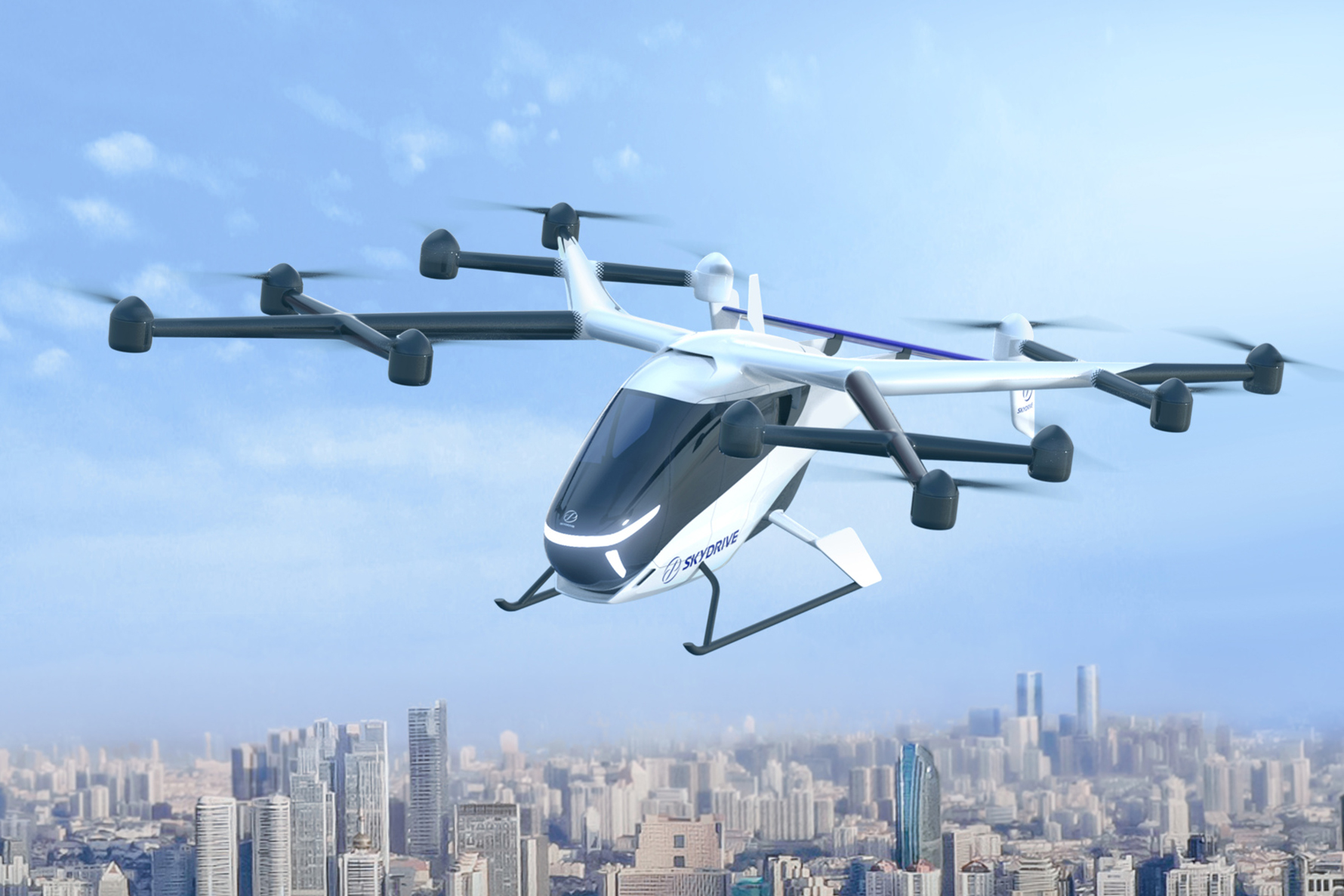
Conclusion: towards smarter, more sustainable skies?
The SD-05’s flight over Osaka is no mere engineering feat. It is the symptom of a discreet but profound shift:air travel is entering a new phase, where innovation is no longer measured solely by speed or range, but by the ability to reduce the ecological footprint, adapt to urban constraints, and integrate into connected ecosystems.
SkyDrive, with its solid industrial partners and a strategy rooted in reality, shows that this vision can be embodied today. By focusing on sobriety, safety and certifiability, the Japanese manufacturer is following the opposite logic to that of the “tech show”: that of useful, concrete aviation , ready to be adopted.
In the years to come, eVTOLs won’t replace private jets or long-range helicopters. But they will open up a new layer of mobility: that of short distances, intra-metropolitan connections, heliport-airport links, in a more discreet, cleaner, smoother environment.
For business aviation players, this is a development to be closely monitored – not as a threat, but as a strategic complement, to be integrated into a logic of high-end multi-modality.

